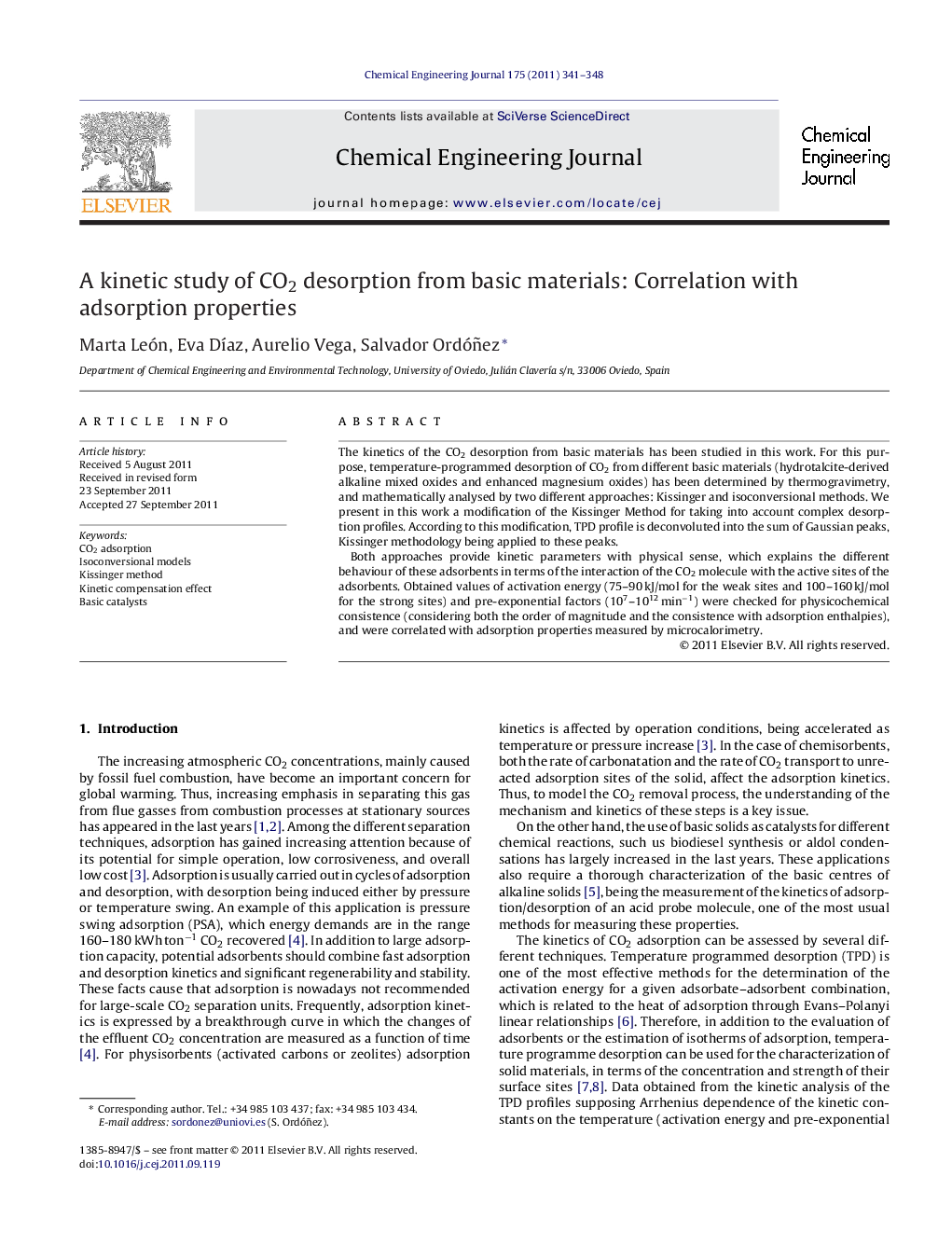| Article ID | Journal | Published Year | Pages | File Type |
|---|---|---|---|---|
| 150990 | Chemical Engineering Journal | 2011 | 8 Pages |
The kinetics of the CO2 desorption from basic materials has been studied in this work. For this purpose, temperature-programmed desorption of CO2 from different basic materials (hydrotalcite-derived alkaline mixed oxides and enhanced magnesium oxides) has been determined by thermogravimetry, and mathematically analysed by two different approaches: Kissinger and isoconversional methods. We present in this work a modification of the Kissinger Method for taking into account complex desorption profiles. According to this modification, TPD profile is deconvoluted into the sum of Gaussian peaks, Kissinger methodology being applied to these peaks.Both approaches provide kinetic parameters with physical sense, which explains the different behaviour of these adsorbents in terms of the interaction of the CO2 molecule with the active sites of the adsorbents. Obtained values of activation energy (75–90 kJ/mol for the weak sites and 100–160 kJ/mol for the strong sites) and pre-exponential factors (107–1012 min−1) were checked for physicochemical consistence (considering both the order of magnitude and the consistence with adsorption enthalpies), and were correlated with adsorption properties measured by microcalorimetry.
Graphical abstractFigure optionsDownload full-size imageDownload as PowerPoint slideHighlights► Modelling of TPD profiles with complex desorption patterns. ► First approach: deconvolution in Gaussian peaks + Kissinger method. ► Second approach: use of a model-free isoconversional method (activation energy distributions). ► Both approaches provided congruent information.
